What type of doors do I have and
are they worth saving?
Independent Surveyors and Doors
 If you need help and advice with regard to conservation matters we are happy to chat to you about this. We also incorporate such advice into our property surveys sometimes called building surveys and sometimes called structural surveys. For a friendly chat please free phone 0800 298 5424.
If you need help and advice with regard to conservation matters we are happy to chat to you about this. We also incorporate such advice into our property surveys sometimes called building surveys and sometimes called structural surveys. For a friendly chat please free phone 0800 298 5424.
We are also happy to talk to you about design, alterations and extensions onto older properties.
Free phone 0800 298 5424
Almost all you need to know about doors
We have recently surveyed a lovely Tudor property that had the benefit of exposed timber beams. It had some wonderful features. It was a Listed property including a dragon rose within the ceiling and a queen post roof. The plank doors (we will explain more about what these are later in the article) are being replaced by modern doors. This door is completely out of keeping and out of character for the property and this got us to start thinking that we really need to think more about the internal doors that we keep and the internal doors that we replace. This article explains more about this.
 |
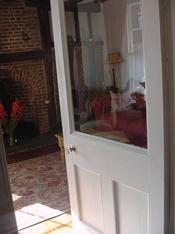 |
|
Example of a plank door |
A modern door |
Good design is all inclusive
 We do want to talk about doors and whether they should be saved or not but first of all we want to broaden the subject slightly and talk about good design. We have been asked in the past what do we consider as good design? This question is normally asked with the aim of us picking a particular era such as Tudor, Georgian, Victorian etc, etc. Having surveyed nearly every sort of building over the years from churches to sport centres, from warehouses to residential houses and from new pubs to Listed buildings and every sort of house you can think of, we weren't sure how to answer this question for a long time as we like the look of a Tudor building, the decorative features of the timber within a Jacobean building but equally we like the light that you get within a Georgian property.
We do want to talk about doors and whether they should be saved or not but first of all we want to broaden the subject slightly and talk about good design. We have been asked in the past what do we consider as good design? This question is normally asked with the aim of us picking a particular era such as Tudor, Georgian, Victorian etc, etc. Having surveyed nearly every sort of building over the years from churches to sport centres, from warehouses to residential houses and from new pubs to Listed buildings and every sort of house you can think of, we weren't sure how to answer this question for a long time as we like the look of a Tudor building, the decorative features of the timber within a Jacobean building but equally we like the light that you get within a Georgian property.
We have had the privilege of living and owning both as well as living in a brand new property. We would not answer the question anymore by what era we like but more that we like good design and part of that good design is having a design which brings us back to doors, as doors are part of this case.
Should I replace my doors?
It may seem a strange thing to do an article on but we have recently noticed in older properties the removal of traditional doors and them being replaced with modern doors. We feel it's a real shame to lose the original design doors as well as the history. The doors that they are often replaced by are modern and have a completely different construction.
What are modern doors made out of?
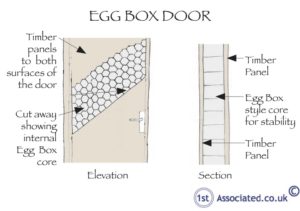 The modern doors are often referred to as egg box doors because if you open them up there is little more than an egg box type construction within them and you would pay considerably more for a lead wood door.
The modern doors are often referred to as egg box doors because if you open them up there is little more than an egg box type construction within them and you would pay considerably more for a lead wood door.
However a door from only 30 to 50 years ago contained a lot more timber and if you go back a few centuries then the doors were practically a work of art.
Here's some information on doors and our thoughts on them. Remember this is a personal view.
Externally windows and door are protected but not internally
The conservation movement has had a push to ensure that the original windows and doors stay externally. We often feel it's a shame when they are lost internally particularly as often they are replaced with a lesser quality door. We hope this article makes you think about whether you should be replacing the doors or not.
Surveyors and photos
We are using photographs that we have taken from surveys over the past year so you will see a vast range of different doors. We semi apologise for the quality of some of the photos in advance. Typically on a survey we are taking 100 to 200 photos of which a few of these are doors. They were never meant to appear in an article but we feel the article is far more useful to everyone if we include photographs. We may not be David Bailey or any other distinguished photographer but our photographs will certainly help you to understand the reports better.
What type of door would a Tudor, Jacobean or Elizabethan property of had?
This is a very good question as so much has been replaced and altered over the years. It's likely to have had a plank door of sorts. It is literally built from vertical planks of timber that are held together by horizontal timbers. The deluxe version that is still relatively commonly known as a ledge and brace door. Ledge and brace doors have horizontal timbers with diagonal bracing timbers. A high quality version of this door would have had planks on both sides. Remember this is from an era when to cut a straight edge was a major feat and generally nothing in the property was straight.
 |
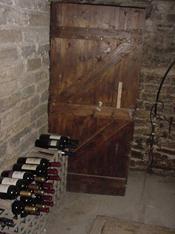 |
|
A modern plank door
|
A relatively modern ledge and brace door |
One off buildings require one off door construction
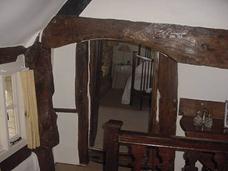
In the photo below you can see the door opening we recently came across in a survey of a Tudor property. You can see there are few straight edges and as you can see the timber has been carved. This is a great example of a traditional domestic timber door and all doors in the 18th Century. Panel doors were very common in the 18th Century and 19th Century and they are still popular today but the construction of an older style panel door is completely different to a modern style panel door.
This is the opening that the door had to fill in a Tudor property so you can see there are very few straight edges

This is a close up of the door. You can see from the light how the timber has been carved.
Panel Doors in the 18th Century
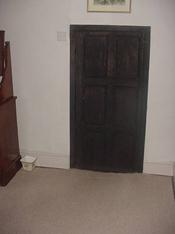
This is an older style panel door. Style was all important in this type of door mouldings being used.
Victorian panel door
Many Victorian houses we go in have wooden panel doors. These are generally stripped of paint however from what we have read and from what we understand the Victorians would have been horrified at having the timber of these doors shown and would generally have painted them.
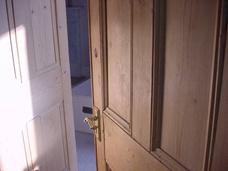 |
 |
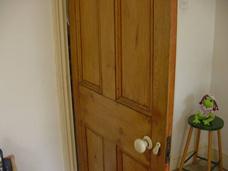 |
|
A stripped pine door |
A close up |
A modern copy |
War year doors
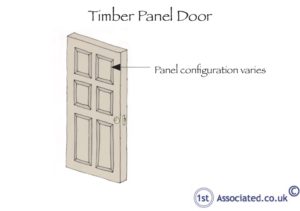
During the war years we were still making doors out of timber, this may sound a strange expression but when you understand what a modern door is made of you will appreciate the comment further. We have thought about this over the years and we really do think that a well maintained good quality war year's door really keeps the character of a property of this age
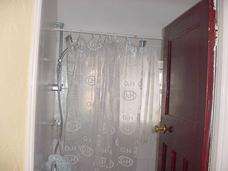 |
 |
|
A war year's door |
Another example of a war year's door |
Veneer doors
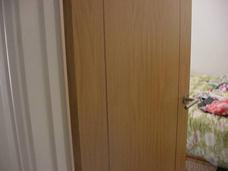
We have had veneer doors appear and reappear several times in the 1960's and the 1970's; there seems to be a ten year cycle. The modern veneer door can add quality and character to a property.
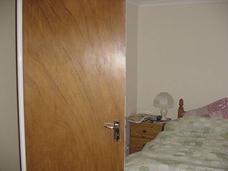
Coloured older style veneer doors are still popular although the darker veneer doors tend to, in our opinion, look dated.
Modern Doors
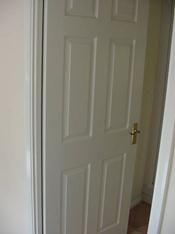
A modern pre-sprayed pressed egg box door.
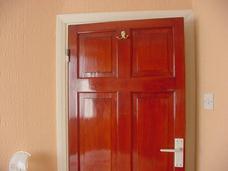
A modern panel door

A solid wood panel door
Dangerous doors!
We didn't know really what to call this section so thought we would go for something dramatic such as dangerous doors. Two types of doors we just wish to bring to your attention:
Fully glazed doors can be a danger, particularly to the young and unstable and if they are not made from a safety glass they can no doubt cause some damage to. We are always weary when carrying out a survey with fully glazed doors, however a glazed door does have its uses as the light can be transferred from one area to the other.
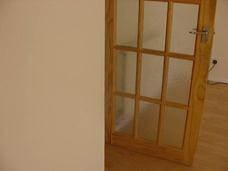 |
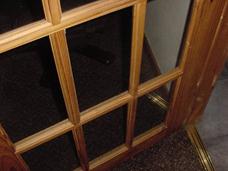 |
 |
|
A fully glazed door |
A close up of a fully glazed door |
Light can be transferred |
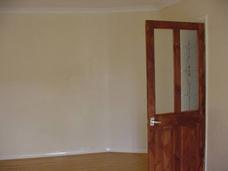
We have even seen some older style panel doors where the use of borrowed light has worked very well.
Door closers

Door closers on fire doors are very common in commercial properties; there is also a fair number in residential properties. There are two types most commonly used.
In the modern residential property is a central integral door closer that looks like a bike chain and this is commonly known by its trade name as a Perco door closer.
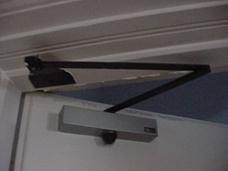
The other type of door closer most commonly seen in commercial properties is the overhead door closer both of which close the door in the case of a fire and contain the fire for some time depending upon the quality of the door, half an hour or an hour fire resisting
Picking the right surveyor to survey your historic building
If you are looking for a surveyor it may be worth asking him a few questions about doors to see if he knows what he is really talking about with historic buildings.
Independent Surveyors
If you truly do want an independent expert opinion from a surveyor with regard to valuations, mortgages, mortgage companies, surveys, building surveys, structural reports, engineers reports, specific defects report, structural surveys, home buyers reports or any other property matters please contact 0800 298 5424 for a surveyor to give you a call back.
Commercial Property
If you have a commercial property, whether it is freehold or leasehold then sooner or later you may get involved with dilapidation claims. You may wish to look at our Dilapidations Website at www.DilapsHelp.com and for Disputes go to our Disputes Help site www.DisputesHelp.com .
We hope you found the article of use and if you have any experiences that you feel should be added to this article that would benefit others, or you feel that some of the information that we have put is wrong then please do not hesitate to contact us (we are only human).
The contents of the we site are for general information only and are not intended to be relied upon for specific or general decisions. Appropriate independent professional advice should be paid for before making such a decision.
All rights are reserved the contents of the website are not to be reproduced or transmitted in any form in whole or part without the express written permission of www.1stAssociated.co.uk
